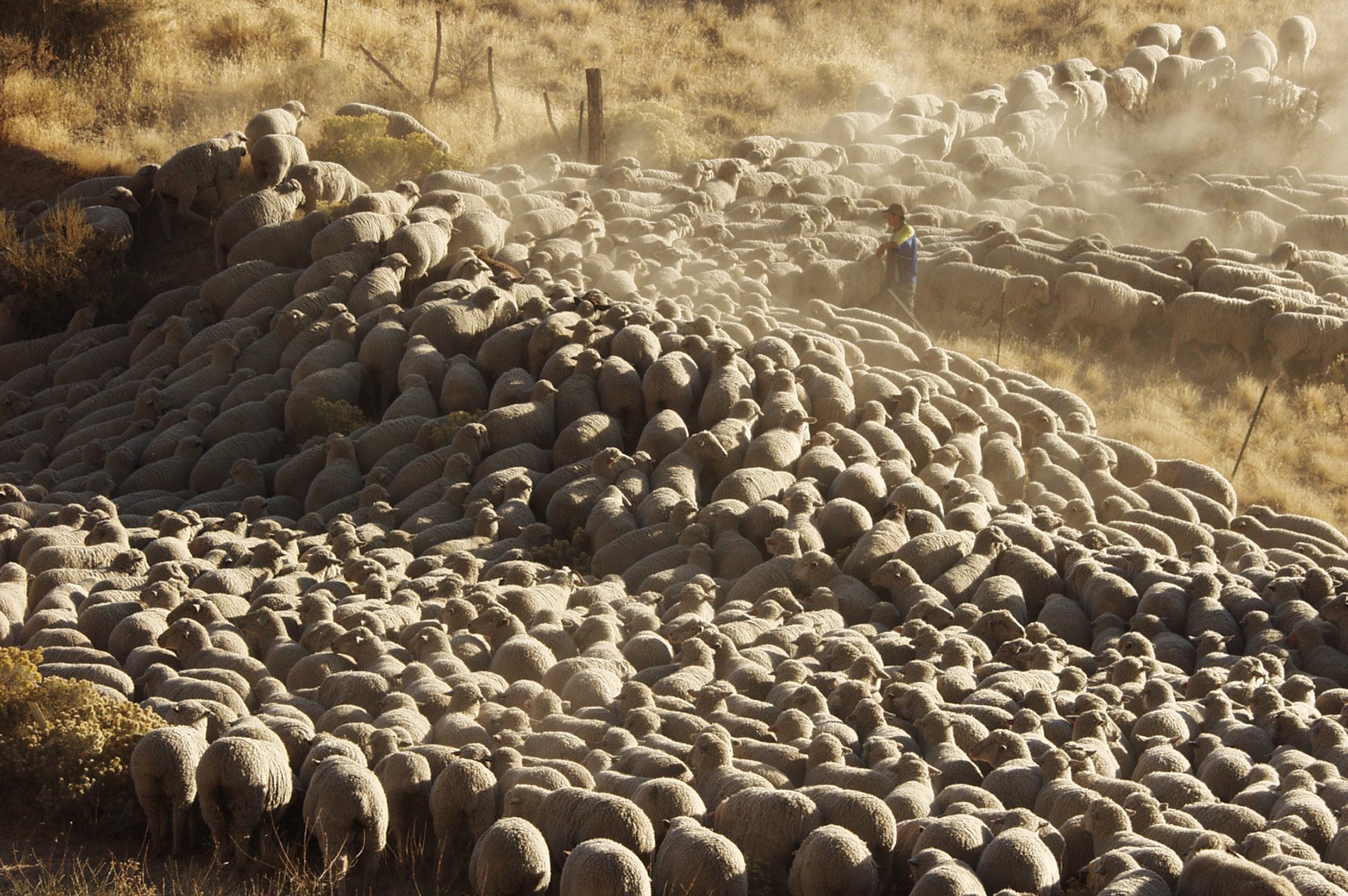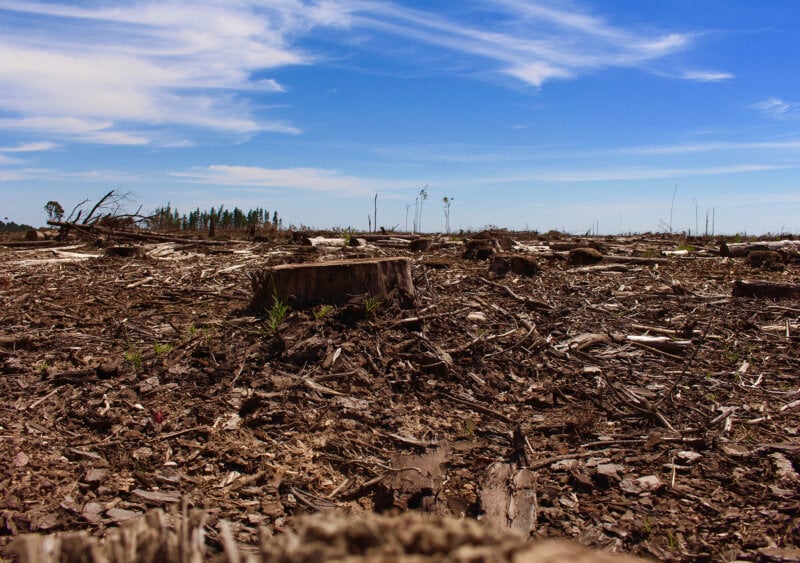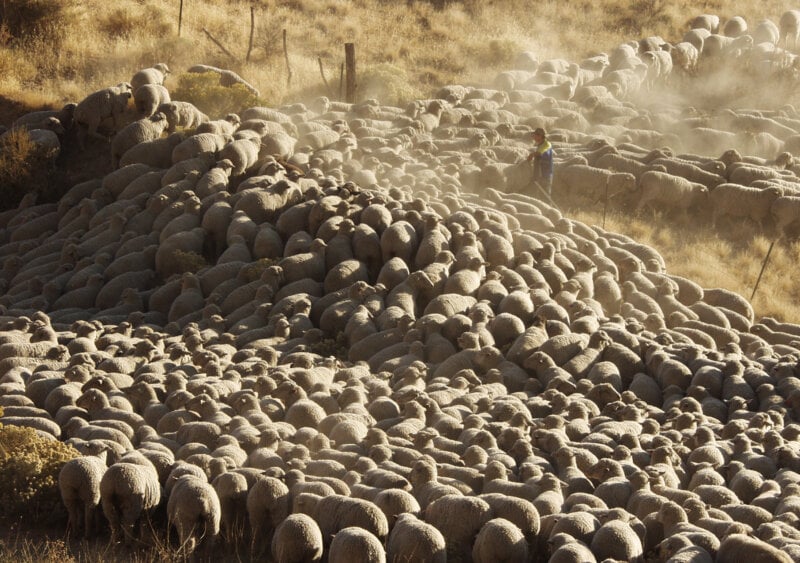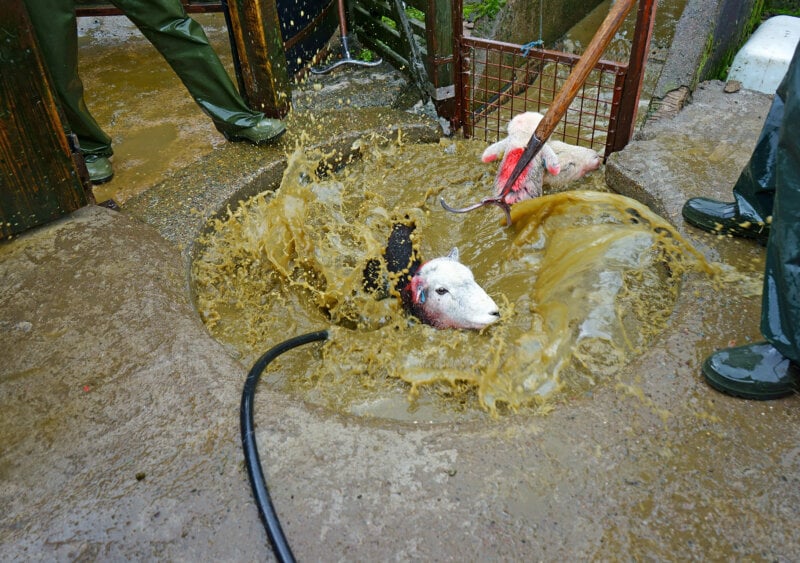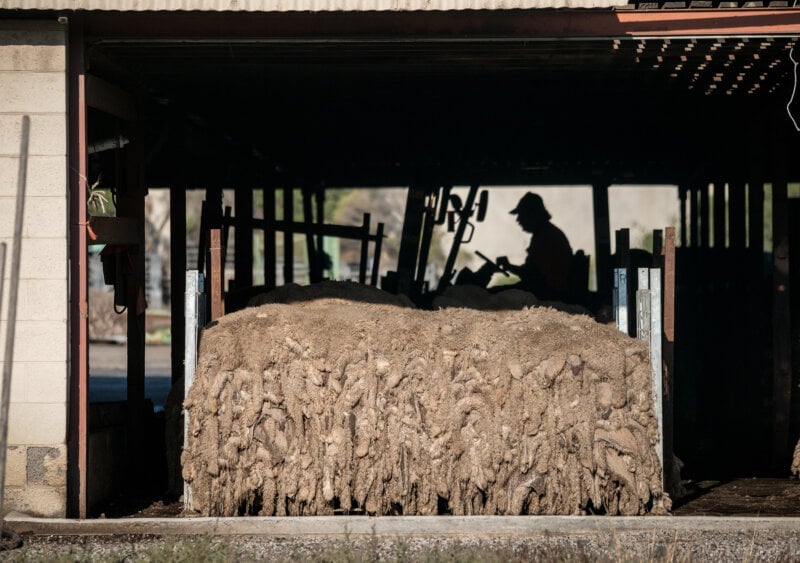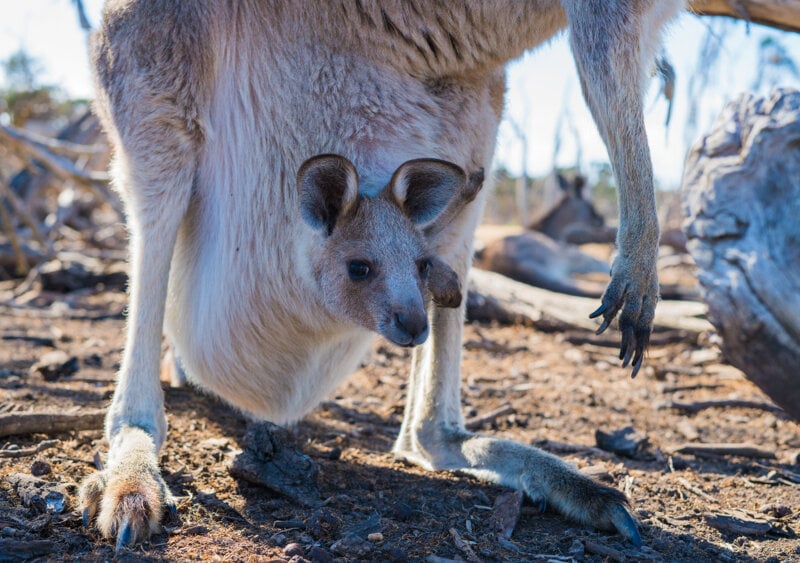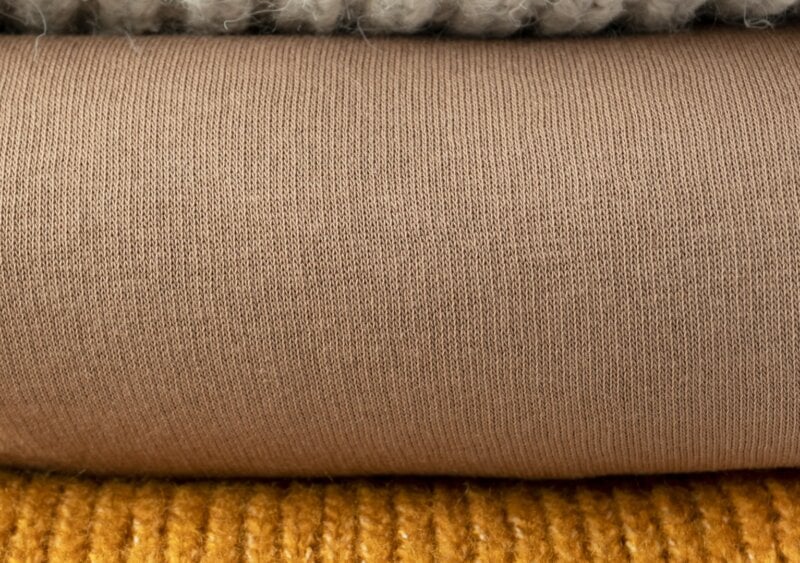Greenhouse Gases and Wool
All clothing production has an environmental impact, but some materials are more harmful than others. Using Australian fibre, producing a wool-knit garment emits 27 times more greenhouse gas–equivalent emissions than a cotton-knit garment. (See a breakdown of how this is calculated here.) Why?
Sheep farming – like cattle farming – generates huge quantities of the greenhouse-gas emissions that cause climate change. This is widely recognised when it comes to lamb meat yet often overlooked when we use the same animals for their fleece instead of their flesh.
Globally, around 45 million tonnes of carbon dioxide–equivalent gases come from the fibre production of small ruminant animals such as sheep and goats. In a paper published in the Journal of Cleaner Production, researchers at Queensland University of Technology and FSA Consulting found that around 25.1 kg of greenhouse gases are emitted per kilogram of wool produced in New South Wales.
A wool-knit garment emits 27 times more GHG–equivalent emissions than a cotton-knit garment.
One sheep can produce about 30 litres of methane each day.
Emissions originate from three main categories of processes: enteric fermentation, manure, and feed.
Enteric Fermentation
Sheep are ruminant animals (meaning they have multiple stomach chambers), and as they digest their food, gases build up inside their intestines that must be expelled. So they burp and fart a lot, releasing enormous amounts of methane gas into the atmosphere. Non-ruminant animals also produce methane, but the amounts are much lower by comparison. One sheep can produce about 30 litres of methane each day.
According to the United Nations Economic Commission for Europe, methane has 28 to 34 times the impact of carbon dioxide in a 100-year period and over the first 20 years after it reaches the atmosphere, it’s 84 to 86 times more potent. Despite this, there’s no standard approach to monitoring, recording, or reporting methane emissions.
And in New Zealand, which famously has a sheep population five times greater than its human population, gases passed by animals make up 88.4%of the nation’s total methane emissions. Specifically, 27.9% of them come from sheep used for wool and meat. Around half of New Zealand’s total greenhouse-gas emissions come from animal agriculture – 12.7% of which come from sheep.

Manure
Just as sheep produce a lot of gas while digesting, their faeces (of which there is a considerable amount – around 2 kg per day per sheep) also produce emissions. Methane is released from the decomposition of organic material, and nitrous oxide emissions occur when nitrogen from urine and dung is added to the land. Nitrogen can also evaporate into the air, with some of it returning to the ground during rainfall as nitrous oxide.
Nitrous oxide emissions have ballooned 30% during the past four decades, and much like methane, it’s more potent than carbon dioxide. In fact, nitrous oxide warms the atmosphere around 300 times more than carbon over a 100-year period.
But the problem with poo doesn’t end there. Excrement from sheep and other animals also leaches into waterways, resulting in eutrophication – a serious ecological problem that occurs when nutrients from run-off waste cause excessive plant growth in water systems. This suffocates animals by depleting oxygen levels in the water and is the leading cause of “dead zones”.
Feed
Land clearing is often undertaken to create pasture for sheep to graze. As previously mentioned, forests are a natural carbon sink, and the carbon stored in vegetation and soil is vulnerable to returning to the atmosphere via land clearing.
While it would be ideal (and cheaper) for farmers if sheep could survive only on what they graze, periods of drought and slowed grass growth in colder climates mean most animals’ diets are supplemented with grains, hay, and silage. The land used to grow these crops not only increases the footprint of land ultimately needed to produce wool but also generates further emissions from the use of that land. Of course, carbon dioxide emissions also originate from the use of fossil fuels to manufacture and clean wool and transport sheep and their fleece around the world.
